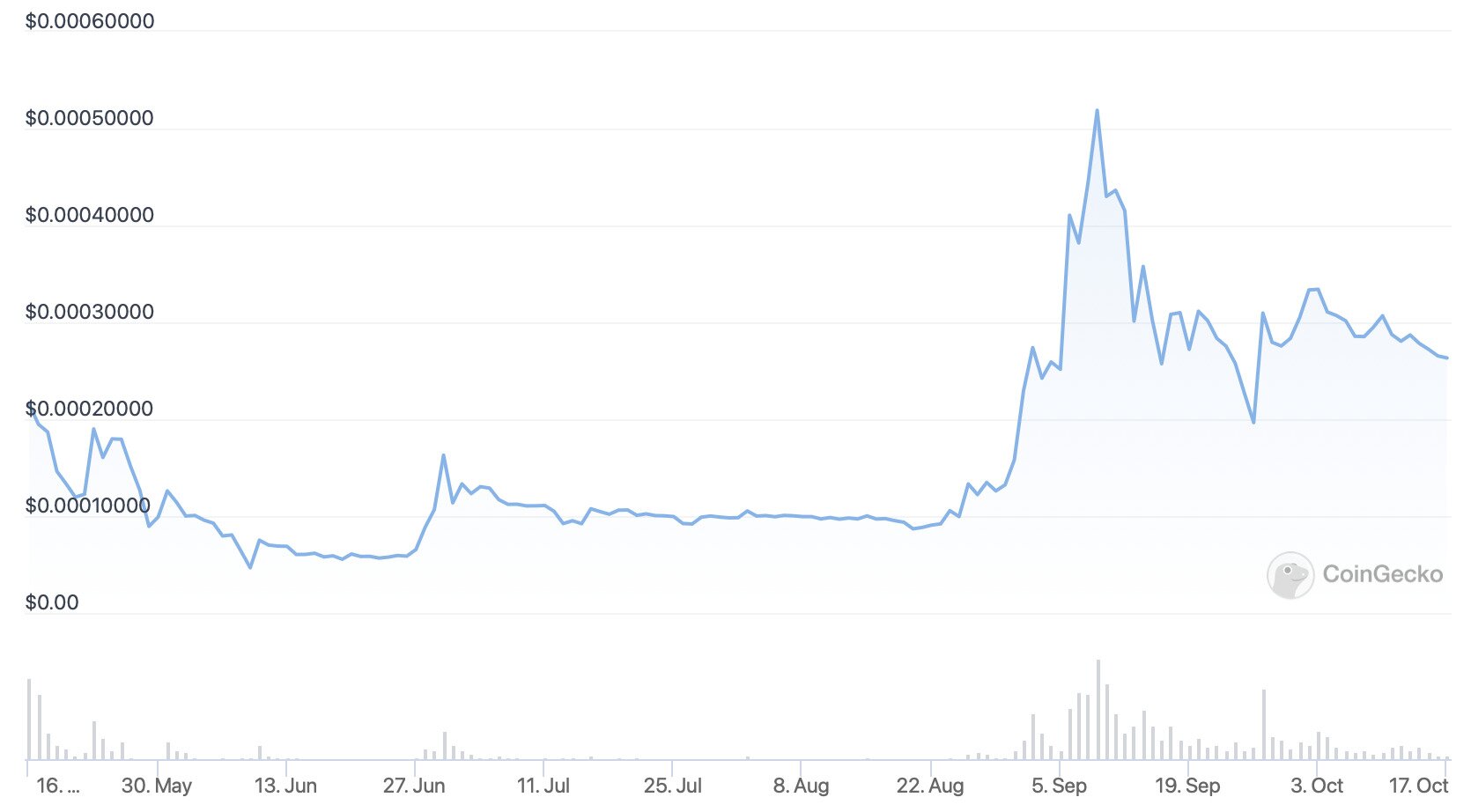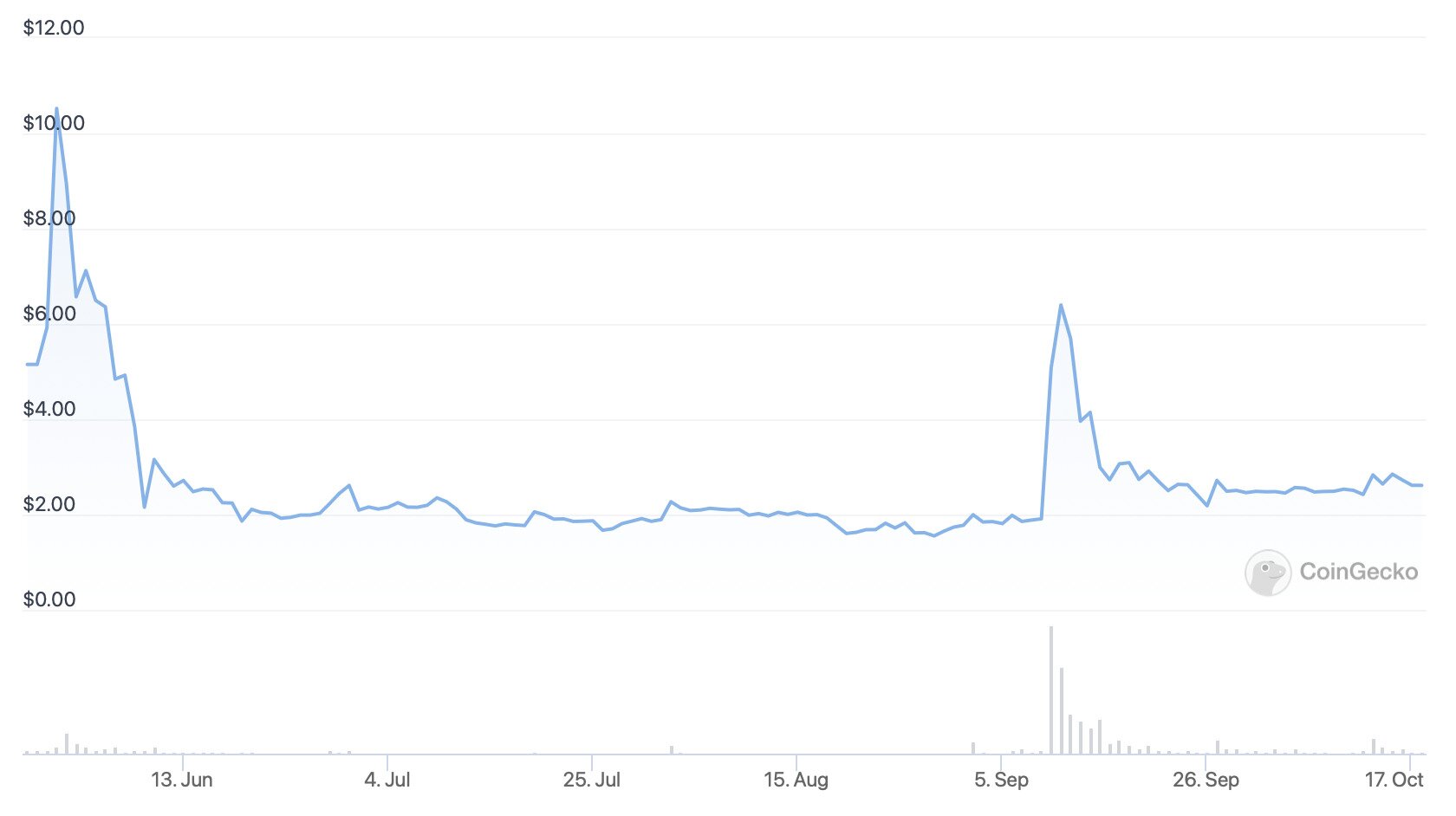- >News
- >Are Terra Luna Classic, USTC Now Good Cryptos to Buy? Or Speculative Playthings?
Are Terra Luna Classic, USTC Now Good Cryptos to Buy? Or Speculative Playthings?
2022 has hardly been jam-packed with good news for crypto, as far as prices go. However, while the overall market trend has been downwards this year, a few notable exceptions have cropped up on occasion, with one of the most eyebrow-raising being the 26,000% rise Luna Classic (LUNC) has enjoyed since its price collapsed in May.
Yes, LUNC did fall from as high as $119 in April to $0.000000999967 by mid-May (it was then known as LUNA), but since this all-time low it has been the best-performing cryptocurrency in the market. Likewise, its sister token — the stablecoin TerraClassicUSD (USTC) — has also risen strongly since plunging to record lows, albeit by a slightly less impressive 540%.
And with the world’s largest crypto-exchange, Binance, committing to an ongoing LUNC token burn at the end of last month, talk has increasingly grown of both Luna Classic and TerraClassicUSD reaching their former heights. This is unlikely though, since even if both disgraced altcoins may continue to enjoy some notable gains in the short- and medium-term, they now completely lack fundamentals after the failure of USTC’s price support mechanism. And with Terra co-founder Do Kwon wanted by the South Korean police, it also remains highly unlikely that Luna 2.0 has a sustainable future ahead of it.
LUNC and USTC Outpace the Market Since May and June
For the sake of comparison, since LUNC reached its all-time low of $0.000000999967 on May 13, the market as a whole has fallen by 25%. Similarly, bitcoin (BTC), ethereum (ETH) and cardano (ADA) have fallen by 33.5%, 33% and 22%, respectively.
LUNC’s price history since the middle of May. Source: CoinGecko
So perversely enough, you would have been better off investing in the failed LUNC from mid-May onwards. Not only has the coin risen by 26,000% since then, but it also witnessed a rise of over 58,000% at one point, having reached a post-crash high of $0.00058436 on September 8.
Funnily enough, September 8 was the very day when the surviving Terra community passed proposals for a 1.2% tax burn on all on-chain LUNC and USTC transactions. These proposals went live from September 21 onwards, although both LUNC and USTC had fallen again by this point, largely in step with wider negativity in the cryptocurrency market as a whole (not to mention global stock markets).
Nonetheless, since the fall in mid-September, LUNC and USTC have done well again, with a number of exchanges supporting the tax fee burn mechanism (e.g. Binance, MEXC, KuCoin, Crypto.com).
In fact, both received a real shot in the arm around September 26, when Binance announced an additional LUNC token burn mechanism, whereby it would burn all of the transaction fees it receives in LUNC.
#Binance will implement a burn mechanism to burn all trading fees on $LUNC spot and margin trading pairs. https://t.co/Depz9nYDVO
— Binance (@binance) September 26, 2022
So far, it has burned over 10 billion LUNC, which amounts to roughly 0.144% of its total circulating supply of 6.9 trillion. This may seem like an almost trivial figure, yet it’s worth remembering that Binance will be doing this indefinitely, with the exchange updating its burn total every week.
At the same time, other parts of the industry are also entering the fray. Announced on October 10, Seattle-based developer KaJ Labs revealed that it will be committing $400 million towards burning 2.5 trillion in LUNC. According to its statement revealing this move, this burn will be achieved via its Finesse Shadow Warriors play-to-earn game, which is the first title in its Lithosphere metaverse.
Taken together, such announcements have served to push LUNC and USTC back into the limelight, with a growing number of Terra supporters now claiming that both coins will return to something approaching their former highs.
Who will hit his target first? 🚀🌕
$50 $1 $1#Luna #Shib #Lunc
👇 👇 👇— Amanda $LUNC 🌖 (@AmandaLunc) October 16, 2022
As for Luna (LUNA), it has remained above $1 for the duration of its short existence, having been launched on May 28 as part of the Terra 2.0 revival plans formulated by co-founder Do Kwon.
LUNA’s price history for the duration of its existence. Source: CoinGecko
LUNA, as the newer coin is known, has been given a hard cap of 1 billion, with a current circulating supply of around 154 million. As set out by the Terra 2.0 revival plan, 40% of its supply has been earmarked for pre-crash Luna (now LUNC) holders, 40% for pre-crash UST holders, 10% for Luna (again, LUNC) holders just before the Terra 2.0 hard fork, and 10% for ‘development.’
Despite a surge following its launch and then in early September, the new LUNA has spent much of its life at low levels.
Are the Terra Coins Good Cryptos to Buy?
This brings us to the all-important question here: are LUNA, LUNC and USTC worth buying?
This is really a two-pronged question. On the one hand, there remains a very good chance that LUNC and USTC will continue to see rallies in the short-term, largely because both have started from such a low base. When you add the fact that it has its own internal tax burn, as well as the fact that the likes of Binance are adding extra burns on top of this, LUNC in particular could rally again as a result of renewed optimism.
The thing is, it remains very implausible that LUNC and USTC will return to the price levels they last saw in April and early May.
Just look at LUNC’s current supply of 6.9 trillion tokens. Back in April, when it reached its all-time high of $119.18, it had a supply of around 350 million. The cryptocurrency community will therefore have to burn a very large amount of LUNC to come anywhere near this total.
More fundamentally, while burns mean that we can expect more short-term rallies, there’s very little probability that LUNC will enjoy sustained growth in the long-term. This is because, prior to May’s crash, its price rose as a result of the growing supply — and growing demand for — USTC. That is, LUNC would be burned whenever new USTC was minted, with the stablecoin being the third-biggest in the market by that point.
Unfortunately, with trust in USTC as a stablecoin fatally broken, this dynamic has been broken. USTC remains well under $1, and few if any people are going to have demand for it as a stablecoin in the future, so the main driver of LUNA’s price has now disappeared. Much the same goes for (the new) LUNA, which exists on the Terra 2.0 blockchain without a corresponding new stablecoin.
Instead, all that’s left in its place is speculation, with traders arguably flocking to LUNC and USTC during the ongoing bear market because not much else is going on right now. This may prove profitable for a little while yet (although LUNC has already risen by 36,000%), but once another bull market kicks, traders may move to more dependable sources of big gains.



